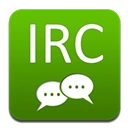
Krakatoa1.6.0.43178 For 3DsMax 2011,2010 32Bit & 64Bit
KRAKATOA? is Prime Focus’ production-proven Volumetric Particle Rendering, Manipulation and Management Toolkit.
It provides a pipeline for acquiring, caching, deforming, shading and rendering vast quantities of particles at unprecedented speed to represent natural phenomena like dust, smoke, silt, ocean surface foam, plasma and even solid objects. Krakatoa? integrates well with Particle Flow, the flexible 3ds Max built-in Event-Driven Particle System, and provides data exchange capabilities for sharing particles with other 3D and simulation applications.
Feature Set
Particle Sources:
Input particles from 3ds Max particle systems like Particle Flow and Thinking Particles.
Use geometry vertices as particles.
Load particle files in Krakatoa?s PRT format, CSV files or RealFlow BIN files.
Rendering Options:
Render using volumetric or additive shading models. The volumetric model simulates attenuation due to the density of particles that the light passes through accurately modeling physical light.
Particles can be rendered as self-illuminated, or with volumetric lighting. Use specular shading when the particles have normals.
Shade particle color and density with 3ds Max material?s color and opacity, or supply a custom color, use blended z-depth and blended camera distance as alternate methods.
Full support for motion and depth of field effects. Use 3ds Max?s built-in multi-pass effects for compatibility.
User can cache particle pipeline results in RAM before or after the lighting phase ? allowing for quick adjustments to lighting parameters or camera placement.
Partitioning
Advanced partitioning enables more particle rendering than 3ds Max can normally process by itself. When running Max in conjunction with Deadline?, users can distribute large particle simulation jobs over multiple machines.
By evaluating the same system multiple times ? with different random seeds for each partition ? Krakatoa? can generate massive particle counts.
Recombine partitioned files and render them as a single particle cloud.
Ultimately, the only limitation on particle counts is your available RAM.
Interaction With Other Renderers
Load specified scene geometry to act as matte objects, obscuring particles from the camera and casting shadows onto particle systems.
Use shadowing attenuation maps created during the rendering process to project shadows from particles onto scene geometry in other renderers. Several provided scripts simplify the process of switching between renderers and re-applying the shadowing attenuation maps to the scene lights.
PRT Loader
Krakatoa?s PRT loader allows users to preview input particle files in the 3ds Max viewport ? and specify how they will load and render in Krakatoa?.
Apply 3ds Max object space and world space modifiers to particles just like any other object.
Use custom geometry to cull volumes for selectively deleting particles.
Playback graph lets users change timing on particle sequences.
? 2010 Prime Focus Software – Designed by Velocity Design Works
All rights reserved. All trademarks contained herein are the property of their respective owners.
If you like this software,Buy it
Enjoy !
CGP Download Mirror:
http://www.fileserve.com/file/7n4BzhC
|
|
|
Krakatoa1.6.0.43178 For 3DsMax 2011,2010 32Bit & 64Bit
Enjoy it !
Play DVD BOY’s








